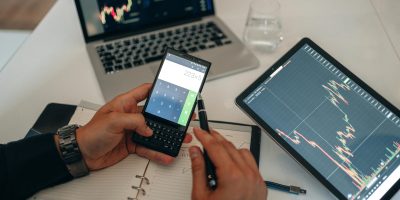Probability is an often abused and misused notion, especially in technical analysis, trading, and investing. Although claims of high-probability setups or macro bets are constantly being made, they are only justified when the probability is defined as a measure of belief. This renders most claims dubious, to say the least.
In my new book, 15 Lies About Trading And Investing, Lie 4 is about claims of high-probability macro bets. These claims cannot be justified in the context of the three main definitions of probability: the axiomatic, the classical, and the relative frequency. These claims only make sense when the probability is considered a measure of belief, which is a fourth but ambiguous definition. Below is how I justify the abuse and misuse of probability in the book in the context of the four definitions of probability:
1. Axiomatic definition of probability
Definition: The probability of an event α is a number P assigned to the event and obeys these axioms:
I. P(α) ≥ 0
II. The probability of a certain event equals 1
III. If two events α and β are mutually exclusive, then P(α+ β) = P(α) + P(β)
This definition of probability provides a foundation for developing a theory but not for calculating probabilities, including those of macro bets or technical analysis setups.
2. Classical definition
Definition: The probability of an event α equals the ratio of the favorable to the total number of outcomes, provided that they are equally likely:
P(α) = Nf/N
where Nf is the number of favorable outcomes and N is the total number of outcomes.
In trading and investing, the possible outcomes are only two, up or down, if we eliminate the possibility of a flat market. Since the use of the classical definition requires that the outcomes are equally likely, the probability is 0.5, and there is no high-probability bet or technical analysis setup, only a fair coin toss. Therefore, the claim of high probability cannot be justified with this definition.
3. Relative frequency definition
Definition: If an experiment under consideration is repeated n times and an event α occurs Nα times, then the probability P(α) of an event α is defined as the limit of the relative frequency of the occurrence of α:
P(α) = lim Nα /n, as n → ∞
This definition is a hypothesis about the existence of the limit, and it is used by engineers and physicists. There is an obvious problem when this definition is used by technical analysts, traders, and investors: experiments cannot be repeated in many cases because market conditions change. Although outcomes are not required to be equally likely as in the classical definition, the sample sizes of most trading strategies and macro bets and most technical analysis patterns are usually not sufficient for calculating probabilities. In addition, we do not even know whether the limit exists for many such setups. Due to these problems, this definition of probability cannot be applied in most cases involving technical analysis patterns, especially in the case of unique macro bets. Exceptions are high frequency/large sample size strategies under the assumption that market structure and conditions are stationary (Ref 2.).
4. Probability as a measure of belief
Probability is often used as a measure of belief; for example, “inflation will probably rise because of loose monetary policy by the Fed”. This use of probability is about a single event and not about the averages of samples. This is also the only definition that applies in the case of macro bets. The issue is whether someone can claim that a certain bet has a high probability in an objective sense. This can only be made in a subjective sense. Since macro bets rarely repeat under the same market conditions, traders cannot use induction to determine the prior probability. Therefore, one must rely on Bayes’ theorem to compute the posterior probability. However, since the path of the computation is not known in advance, any claim of high-probability setups or macro bets is abusing the notion of probability. Usually, such claims can only be justified in the context of confirmation bias for the ex-ante determination of the posterior probability, which can be significantly different than the one computed by Bayes’ theory.
In the case of technical analysis setups, these are mostly used to confirm bias, and probability refers to a belief since there is no easy way of knowing the limit in definition 3, except for maybe high-frequency algos and a limited class of systematic methods. Some technical traders also use the word possibility, but they never justify how they make bias-free selections over various possibilities. In most cases, trading based on possibilities equates to random trading because the alternatives turn out to be equally likely.
As you can see from the above four definitions, when you hear the word “probability” in trading and investing, it is most likely that it is being abused by someone who would like to add quantitative flavor to some soup of technical or fundamental analysis ingredients. Only in rare cases and when the analyst obeys formal rules does the use of the term probability make sense.
Furthermore, expectation is far more important than probability, but this notion also suffers from a lack of sufficient samples in most cases. The expectation is related to probability since it is the mean of the distribution of trade outcomes. More details about the issues related to expectations are found in my book Fooled By Technical Analysis.
Ref.1 Papoulis, A. Probability, Random Variables, and Stochastic Processes, 1965. McGraw-Hill
Ref 2. Harris, M. “Limitations of Quantitative Claims About Trading Strategy Evaluation”, 2016, https://papers.ssrn.com/sol3/papers.cfm?abstract_id=2810170






